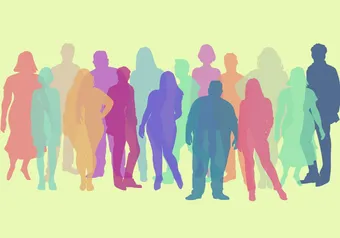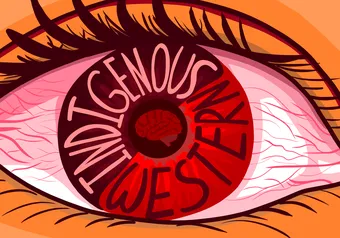Dr. Ian Scott is the director of UBC’s Centre for Health Education Scholarship and a practicing family physician.
Ubyssey Science sat down with him and discussed his views which focused on the role of physicians in the opioid crisis, and where he sees the future of the management of the epidemic heading.
What are opioids?
Opioids are a class of drug [that include prescription drugs like morphine or Vicodin and illegal drugs like heroin]. These drugs have different potencies and slightly different mechanisms of action, but they all essentially work on receptors in the brain and the spinal cord, and cause the effect of reducing pain.
What is the opioid epidemic and how has it developed over the past years?
The opioid epidemic is the increased use of opioids both in clinical [with a doctor] and non-clinical [without a doctor] settings.
In clinical settings, originally, opioids were used primarily in patients who had cancer or were in palliative care. They have recently been used in settings where the person does not have a terminal illness and has a chronic condition.
Illicit use has also increased. The challenge with the opioid crisis is that drugs have become much more available and easier to acquire now. People can go on the dark web and buy a kilogram of fentanyl, and get it delivered to their home.
I’m a practicing family physician, so my concern about the opioid crisis is how to address the challenges of patients coming to see me who are on long-term opioids, and how to either reduce or control their use.
What are some societal implications of this epidemic?
Addiction is a disease and it impairs people’s ability to gain employment, to have quality relationships and to be good members of society. Often, because of the way opioids work, people require increasing doses to maintain their addiction. In order to attain the drug, they engage in behaviour which may be detrimental to their well-being and to their families.
One of the big parts of the opioid crisis is the fact that people are accidentally overdosing now. If opioids are not cut appropriately by the people who are mixing them illicitly and there is a little bit more opioid than expected, the potency is so great that the implications are depression of the respiratory system and your brain dies from a lack of oxygen.
What role have physicians had in the cause of the opioid crisis?
In around 2000, there was a great deal of activity promoting the use of opioids for non-cancerous chronic pains, which up until that point, might have been treated with aspirin, Tylenol or a non-steroidal anti-inflammatory. In the profession, there was a feeling that we were not providing appropriate or adequate care, and we should be using opioids for these people.
There were a number of guidelines written, promoting the use of opioids in that situation, and many physicians were reluctant to prescribe them, but felt that there was evidence there supporting them doing it. We probably both appropriately and inappropriately treated patients with opioids. It generally made opioids a more common and accepted treatment modality in medicine, and people became more comfortable and less hesitant about using opioids.
[Sorry, video not found. You can contact webmaster@ubyssey.ca to fix the issue]
That was not the only cause — nor the major cause — of the opioid crisis, but it was a deliberate act in that physicians were advised that it was appropriate to use opioids to treat chronic pain. There’s a whole pile of other societal factors that I think have led to the opioid crisis — the availability, poverty, lack of stable housing. All of those things have encouraged the opioid crisis, so the physician’s role is one piece of a multi-factorial piece.
How is the decision to prescribe opioids made?
There are some guidelines from the College of Physicians and Surgeons of BC. They’ve set what they feel are appropriate levels of opioid use in patients and our objective is to try to slowly reduce people’s doses.
When we see new patients, we ask them to consent to us doing a PharmaNet search, which allows us to see if other providers are prescribing opioids to them. We can then have a conversation with them and ask them to agree that they will only come to us to get their opioids, and not see multiple physicians.
We’ll do an intake interview with the patient to find out what their opioid history has been, what they are on now and if they’re using any illicit street drugs. Then we’ll happily agree to work with them to reduce their opioid use slowly over time so that they don’t suffer any withdrawal symptoms.
Did this change to guidelines impact how opioids are prescribed?
Yes, it has. Most physicians would feel uncomfortable about having patients on high dose opioids, and generally, we try to reduce people’s doses. The College guidelines have, in some ways, helped in that they’ve given us a bit of a target. Again, one needs to be careful about recommendations from experts, evidence and where the evidence comes from, but people have become a bit more comfortable about the fact that there are some guidelines that we can hold up to ourselves and hold up to our patients.
Physiologically, if you stop high doses right away, the increased number of opioid receptors are essentially hungry for the drug and the patient will have significant withdrawal symptoms, so it needs to be done slowly. There are regimes out there for tapering people which we look up and say, “Okay, we can do it at this level,” and we can talk to the patients about it and explain it to them, and have them come back every week, or every two weeks where they’re on a tapering regime to reduce dose.
What misconceptions about opioids do patients have?
At times, these patients have missed their opioids before and have suffered withdrawal symptoms, so they are nervous and often don’t want to have their dose reduced. They don’t see the problem because they’ve been stable on opioids for a while. We have to make an alliance with the patient and explain to them that we aren’t going to abandon them and we aren’t going to fire them if they don’t succeed, but that we’re going to work together to slowly reduce their opioid use.
The other concern that patients have is that in our healthcare system, drugs are often funded either through the government or through people’s private plans, but other effective pain treatment modalities such as physiotherapy and counselling aren’t as readily funded. So if we had easier access to those things, it might also be easier for us to reduce people’s opioid use.
Drugs are also relatively easy for the patient, whereas physiotherapy and counselling would require some work on the patient, in which they would have to go see a provider regularly. Drugs are easier for the healthcare system, and easier for patients than it is to engage in some of those other things. If we had easier access to physiotherapy and counselling, it might also be easier for us to reduce people’s opioid use.
It seems that in dealing with this crisis, an integrated approach is necessary. How can patients, physicians and regulators in the government take the next step in dealing with this?
It would be helpful to have an integrated approach. It’s not for lack of concern. I think people are very concerned. It’s just a matter of lining a whole lot of pieces that deal with a lot of different parts of the problem, and getting them to somehow work together and coordinate the approach to this. Many people in the system recognize that. It’s a matter of how to do it and it’s a matter of money as well.
Is there anything you would like to add?
As a society, we need to figure out how we’re going to address pain and suffering that people have, because many of these people who have been drawn to opioids — and have become tolerant or addicted — have had some level of trauma in their lives. Opioids have allowed them, in some ways, the ability to tolerate their pain and suffering better, but in the end, those opioids have probably led to greater pain and suffering.
I think we need to figure out a multifactorial approach related to the events which drive people towards using illicit substances to help make their intolerable lives more tolerable, at least at the beginning, before the opioid addiction makes it intolerable.
We need to think about this as more than just stopping people from taking opioids. We need to consider more integrated approaches, supporting people and families, and reducing the trauma that people experience in their lives.
It’s going to take some time. We aren’t going to, just by having some guidelines, fix this in the next year. It’s going to take time for physicians to feel more comfortable in reducing people’s opioid use, for patients to understand that there’s some rationale for not putting them on opioids or reducing their opioid use, and to figure out how to integrate treatment across the province to support people who want to quit or end their opioid use. It’s going to take some time and we need to be ready for the long game on this.
This interview has been edited for clarity and length.
First online
Share this article



![['']](https://storage.googleapis.com/ubyssey/media/renditions/Opioid-maps2-770.width-1000.format-webp.webp)





